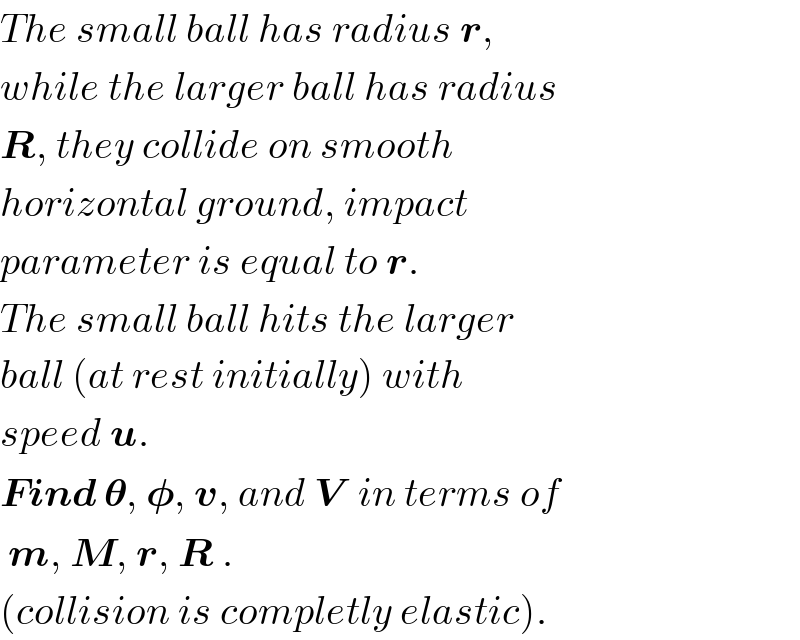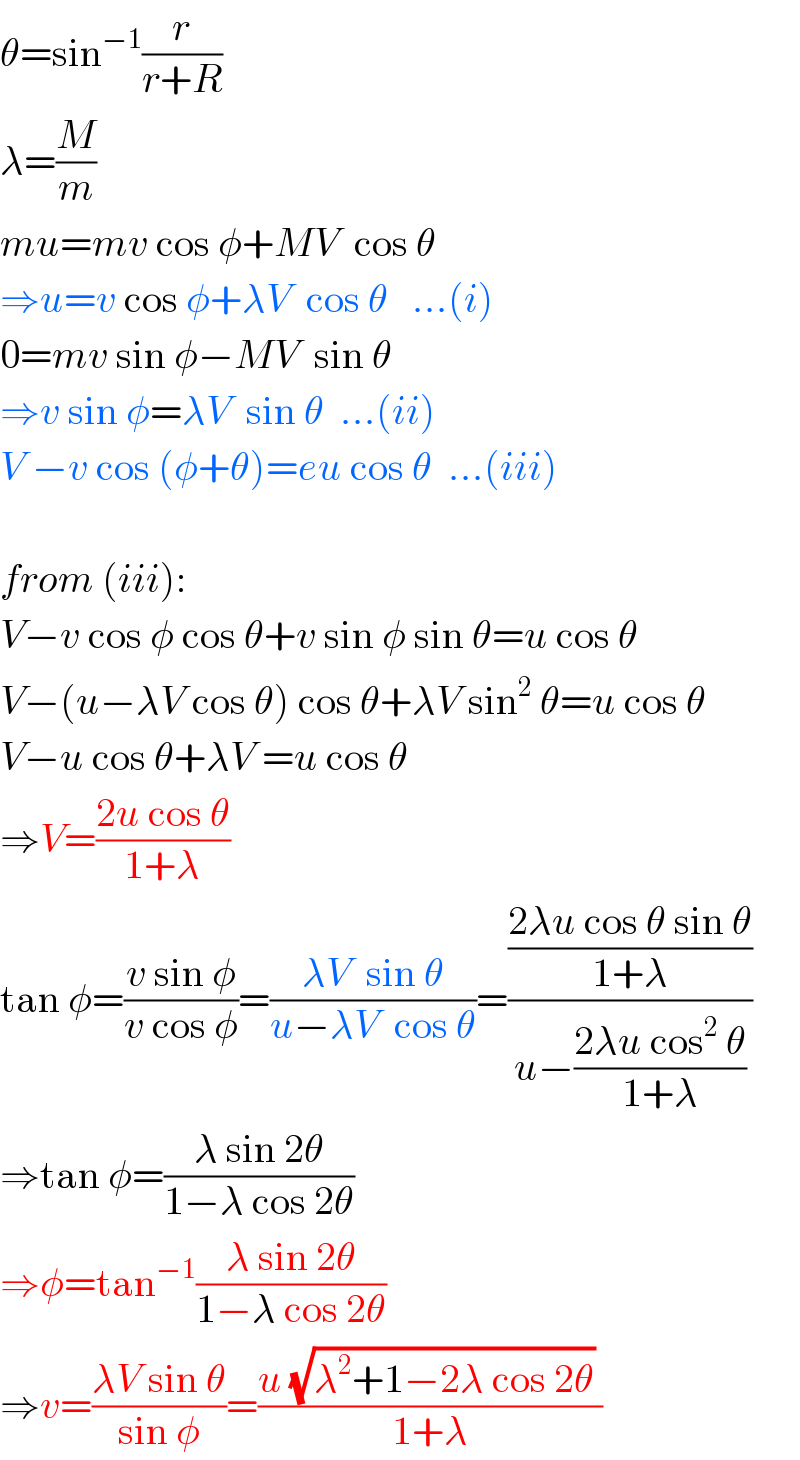
Question and Answers Forum
Question Number 43585 by ajfour last updated on 12/Sep/18

Commented by ajfour last updated on 12/Sep/18

Commented by MrW3 last updated on 12/Sep/18

Answered by MrW3 last updated on 14/Sep/18

Commented by ajfour last updated on 14/Sep/18

Commented by MrW3 last updated on 14/Sep/18

Answered by ajfour last updated on 14/Sep/18
![sin θ = (r/(R+r)) MVcos θ +mvcos φ = mu ...(i) MVsin θ = mvsin φ ....(ii) V−vcos (θ+φ)= ucos θ ....(iii) using (ii) in (i) MVcos θ+MVsin θcot φ=mu let (m/M)=q ⇒ V(cos θ+sin θcot φ)=qu ...(a) using (ii) in (iii) V−((MVsin θcos (θ+φ))/(msin φ)) = ucos θ V(1−((sin θcos (θ+φ))/(qsin φ)))=ucos θ ..(b) eq.(b) ÷ eq.(a) gives (([1−((sin θcos (θ+φ))/(qsin φ))])/(cos θ+sin θcot φ)) = ((cos θ)/q) ⇒ qsin φ−sin θcos θcos φ +sin^2 θsin φ = cos^2 θsin φ +sin θcos θcos φ ⇒ (q−cos^2 θ+sin^2 θ)sin φ = 2sin θcos θcos φ ________________________ or tan φ = ((sin 2θ)/(q−cos 2θ)) ________________________ Now V=((qu)/(cos θ+sin θcot φ)) [see(a)] = ((qusin 2θ)/(cos θsin 2θ+qsin θ−sin θcos 2θ)) ________________________ ⇒ V = ((2qucos θ)/(1+q)) ________________________ v = ((MVsin θ)/(msin φ)) = ((2usin θcos θ)/(1+q))×((√(sin^2 2θ+(q−cos 2θ)^2 ))/(sin 2θ)) ________________________ v = u(((√(1+q^2 −2qcos 2θ))/(1+q)) ) ________________________ .](Q43710.png)
